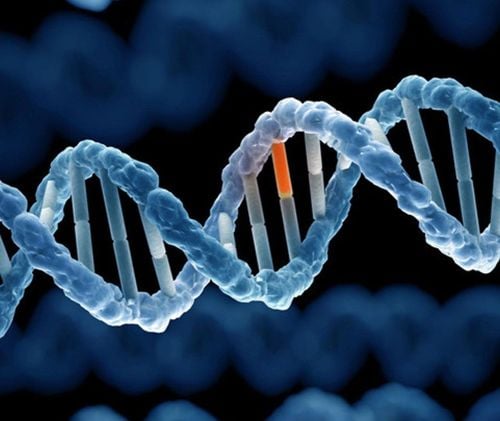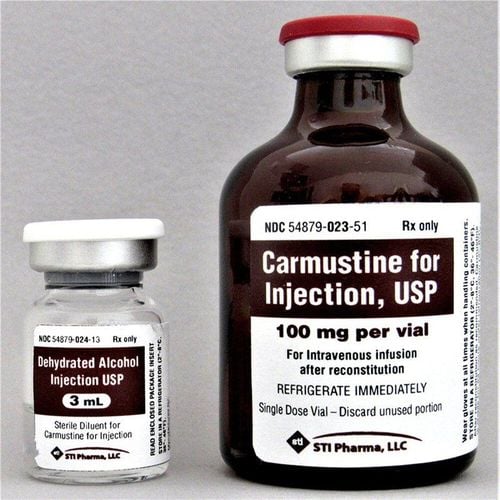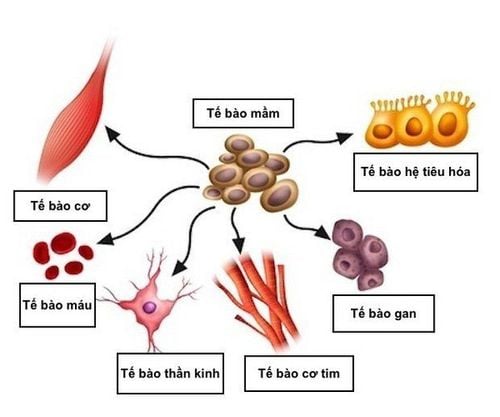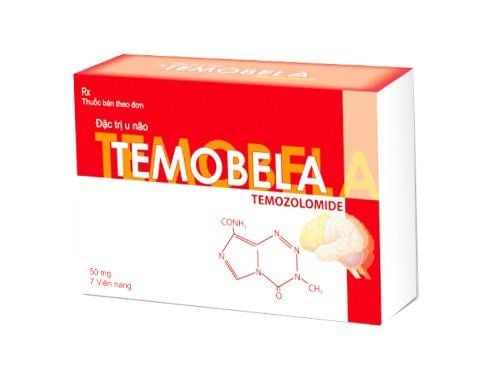This is an automatically translated article.
Central nervous system tumors are not the name of a disease, but rather a group of diseases, including both benign and malignant tumors. What types of CNS tumors are common in children, let's find out through the article below.1. What is a CNS tumor?
A central nervous system tumor (CNS tumor) forms when normal cells in the brain or spinal cord change, grow, and multiply excessively, forming an abnormal mass. CNS tumors are not necessarily malignant, but can be benign. A tumor is cancerous when it is malignant, which means it has the ability to grow, multiply, invade, and spread to other parts of the body (metastasize). A tumor is benign when it can grow, multiply, but not invade, and not metastasize.A CNS tumor can cause a lot of problems because cognitive and motor processes can be affected. Treatment of CNS tumors can sometimes be a challenge, because tumors can be located in locations where intervention would threaten the patient's life or have long-term consequences. Treating CNS tumors in infants and young children can be especially challenging because their brains are still developing.
The brain is the center of thought, memory and emotion. The brain controls the five senses, including smell, touch, taste, hearing, and sight. The brain also controls movement and other basic body functions, such as heart rate, circulation, and breathing. The spinal cord contains nerves that transport signals to and from the body and brain.

U thần kinh trung ương
2. Types of CNS tumors
CNS tumors include many different types. There are many types of which are malignant, have the ability to grow and invade, and metastasize very quickly (ie, have high malignancy). Besides, there are also types of malignancies but the ability to grow, invade and metastasize is less (lower malignancy). Some types of CNS tumors are benign, non-invasive, and metastatic (non-cancerous). In addition, for each type of CNS tumor, there are subtypes, and the rate of tumor growth largely depends on changes in the tumor's genes.The most common types of CNS tumors in children include:
astrocytoma, brain stem glioma, ependymoma, germ cell tumor (germ cell tumor) medulloblastoma astrocytoma astrocytoma belongs to the group of CNS tumors, formed by astrocytes. Normally, astrocytes form the signaling network between the brain and spinal cord. When the central nervous system is damaged, astrocytes form scar tissue. Astrocytomas begin when astrocytes for some reason become abnormal, grow, multiply, and form abnormal masses.
Astrocytomas can appear anywhere in the entire central nervous system, including the following:
The cerebellum, which is an organ located at the back of the brain, is responsible for responsible for coordination and balance. The cerebrum, the largest part of the brain, is responsible for controlling motor activities and language. The midbrain (located at the center of the brain) is responsible for controlling vision, hormone secretion, and movement of the arms and legs. The brain stem is responsible for controlling breathing, controlling eye and face movements, and hand and leg movements. The spinal cord, responsible for sensory and motor control of the arms and legs. Brain stem glioma The brain stem is the connection area between the brain and spinal cord, located in the lowest part of the brain (just above the nape of the neck).
Brain stem glioma is a type of central nervous system tumor. It originates from the change of cells in the brain stem, which multiply out of control to form an abnormal mass. Usually, when brain stem glioma is diagnosed, it has spread throughout the brain stem, because this type of tumor is often very malignant, multiplies and invades and metastasizes very quickly. Only a small percentage of brain stem gliomas are localized, growing and multiplying more slowly.
Brainstem glioma most commonly occurs in children between the ages of 5 and 10, and often begins in difficult-to-operate locations, making the treatment of brain stem gliomas difficult.
Encephaloblastoma (ependymoma) Meningiomas in children is a rare, malignant brain tumor. Meningiomas originate from squamous cells. Although a meningioma can appear anywhere in the brain or spinal cord, it most commonly occurs in the cerebellum. Meningiomas can obstruct the flow of cerebrospinal fluid, causing hydrocephalus. Children unfortunately with hydrocephalus often present with symptoms such as headaches, nausea, vomiting, blurred vision, and difficulty walking.
Germ cell tumor Germ cells are special cells during embryonic development, which later differentiate into eggs in the ovaries (for women) and sperm in the testes (for women). for men). In rare cases, as the embryo develops, the germ cells migrate to other parts of the body (chest, abdomen, brain,...) and form tumors. Germ cell tumors that form in the brain are called intracranial germ cell tumors.
Medulloblastoma Medulloblastoma is a type of brain tumor, originating from many different cells of the cerebellum. Myeloblastoma is most common in children, especially those under 10 years of age.

U nguyên tủy bào
3. When to see a doctor?
Types of CNS tumors in children may not show any symptoms, but if the following symptoms appear, parents should note to take the child to the doctor for an accurate diagnosis and prompt treatment intervention. Time:Headache, which can be so painful that it wakes the child up in the middle of the night, or the headache occurs early in the morning. Unexplained persistent nausea and vomiting. Muscle weakness, stiffness, sudden onset and worsening. There is a problem with vision. Underdeveloped. Growth retardation, early puberty or late puberty. Pain, especially back pain. Irritability, lethargy, or mood swings. Convulsions. Occurrence or repetition of automatic movements (eg, nystagmus, etc.). The head grows too large in young children. Central nervous system tumors are a group of diseases, which can be either benign or malignant. The disease can leave dangerous complications affecting the development, cognition and movement of children. Therefore, early examination and diagnosis is very important. Parents need to pay special attention to their children to see a doctor in time.
Vinmec International General Hospital is the address for examination, treatment and prevention of diseases, including the specialty of Pediatrics - Neonatology. When performing the examination process at Vinmec, customers will be welcomed and used the modern facilities and machinery system along with perfect medical services under the guidance and advice of the doctors. Good doctors, well-trained both at home and abroad. With those advantages, Vinmec has performed examination, diagnosis and saved many children's lives, providing a good chance for a good life and long-term health recovery. Customers can directly go to Vinmec Health system nationwide for examination or contact the hotline for support.
Please dial HOTLINE for more information or register for an appointment HERE. Download MyVinmec app to make appointments faster and to manage your bookings easily.
Articles refer to the source: cancer.net
MORE:
Treatments for neuroblastoma Neuroblastoma: Causes, symptoms, diagnosis and treatment Glioblastoma: The things to know













